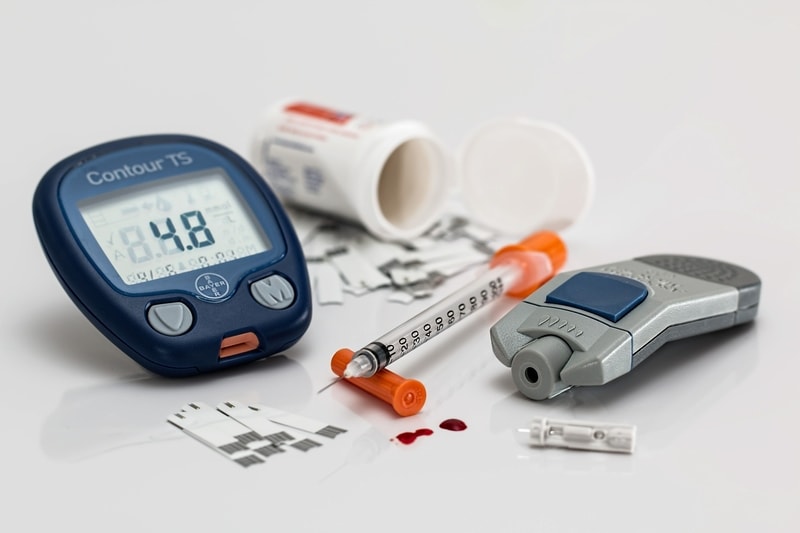The prevalence of diabetes has been steadily increasing for the last thirty years and it is estimated it will affect more than 439 million people worldwide by 2030 (1). Type 1 diabetes, once known as juvenile diabetes or insulin-dependent diabetes, is a chronic condition in which the pancreas produces little or no insulin. Insulin is a hormone needed to allow sugar (glucose) to enter cells to produce energy.
Type 2 diabetes is an impairment in the way the body regulates and uses sugar (glucose) as a fuel. This long-term (chronic) condition results in too much sugar circulating in the bloodstream. Eventually, high blood sugar levels can lead to disorders of the circulatory, nervous and immune systems. Gestational diabetes, which develops during pregnancy and usually resolves after giving birth, carries the same risks. But why are more people developing the condition, particularly Type 2 diabetes, and what can be done to reduce their risk of medical complications, including stroke?
Weight: The size of the problem
The rise in the number of overweight and obese people, especially in lower and middle-income countries, is directly linked with an increase in Type 2 diabetes. However, as eating and physical activity are two things we can control, Type 2 diabetes is potentially preventable (1).
Age: Diabetes is affecting younger people
Sugary drinks and snacks, combined with a sedentary lifestyle, means even the number of children being diagnosed with diabetes has dramatically increased. In general, people with diabetes are 1.5 times more likely to have a stroke than people without diabetes (2). Watching what children eat and encouraging them to get more exercise can help to lower the risk of diabetes, and ultimately, stroke.
Sex: Higher risk of stroke in diabetic women
Experts agree, patients with Type 1 and Type 2 diabetes are more likely to die from diseases that affect the blood vessels in the brain, such as stroke (3). But the risk of having a stroke in the first place also differs for men and women. Because of increasing stroke risk with age and a longer life expectancy, women experience more strokes and more death from stroke (4). During pregnancy, gestational diabetes also raises the risk of high blood pressure and increases the risk of stroke in later life.
Lifestyle: Healthy habits reduce the risk of stroke
Smoking, alcohol consumption, poor diet and lack of physical exercise are all lifestyle factors that contribute to your risk of developing diabetes, or affect your ability to manage it, once diagnosed. Research shows, adopting good health behaviours can improve outcomes; reduce health-care costs; and decrease your own personal risk of stroke (5).
Country: More strokes in low to middle income countries
According to The World Health Organization, diabetes has been rising more rapidly in middle and low-income countries than in more developed countries (1). Where you live also affects your risk of stroke. For instance, low-income countries have 3.6 times higher death rates from stroke than high-income countries (6).
Whilst there are some things, such as age, you can’t change to lower your risk of stroke, Type 2 diabetes remains one of ten modifiable risk factors that can be altered, or prevented, through lifestyle changes.
References
- Chen, R., Ovbiagele, B., & Feng, W. (2016). Diabetes and Stroke: Epidemiology, Pathophysiology, Pharmaceuticals and Outcomes. The American journal of the medical sciences, 351(4), 380–386. https://doi.org/10.1016/j.amjms.2016.01.011.
- Ann Pietrangelo Stroke: Diabetes and other risk factors. Oct 15, 2019. Medically reviewed by Maria Prelipcean, M.D. https://www.healthline.com/health/diabetes/diabetes-and-stroke.
- Walter N. Kernan, Silvio E. Inzucchi. Treating Diabetes to prevent stroke. Originally published 20 Apr 2021. https://www.ahajournals.org/doi/full/10.1161/STROKEAHA.120.032725.
- https://www.ahajournals.org/doi/10.1161/STROKEAHA.117.018418, Tracy E Madsen et al. Impact of Conventional Stroke Risk Factors on Stroke in Women. Originally published 8 Feb 2018.
- https://www.stroke.org/en/life-after-stroke/preventing-another-stroke.
- GBD 2019 Stroke Collaborators. Global, regional and national burden of stroke and its risk factors 1990-2019: a systematic analysus for the Global Burden of Disease Study 2019. vol 20. issue 10. P798-820. 2021 Oct 01.
Updated February 2022
Next review 2024


